Winter is such a great time to go birdwatching in the UK purely because it’s such a harsh season. Food is harder to find, it’s difficult to stay warm, and predators take full advantage of those living life on the edge. The only thing for birds to do is take a sabbatical in warmer climes, flock together for warmth and safety, or in many cases, both! Keep an eye out for these wonderful winter birds on your next walk at Brockholes or beyond.
Northern grit: Which birds can you see toughing it out this winter?
Fran Taylor
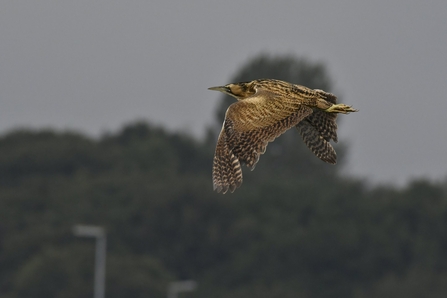
Bittern - Paul Lambert
Bittern
Oftern heard before it is seen, the Bittern is a regular winter visitor to Brockholes, often spotted by the eagle eyed among us, lurking in the reedbeds. A member of the heron family, Bitterns feed on eels and other fish, so enjoys time in the lakes. It is has wonderfully camouflaged plumage, helping it to blend into the reeds and can also stand motionless for long periods to avoid detection.
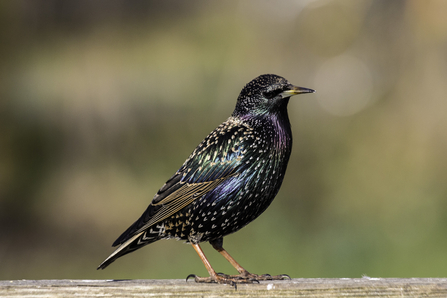
Mark Robinson
Starling
A garden regular and a favourite here at Brockholes, the starling has unfortunately undergone a steep decline in the last 10 years. In winter the starling’s glossy, petrol-stain plumage is covered with a constellation of straw-coloured tips. They can often be seen moving in huge groups through a wintry sky in beautiful displays known as murmurations. These are often clearly visible at Brockholes and are a sight not to be missed. Keep an eye on our social media pages to find out where the best viewing spots are for this year.
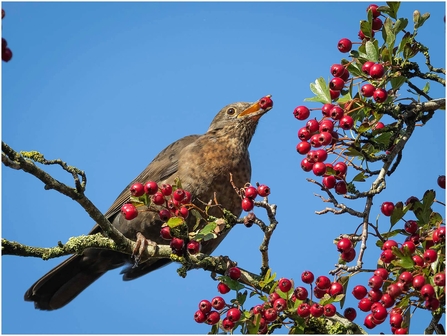
Winter thrushes
Is it even winter until redwings and fieldfares – our famous winter thrushes – arrive from their breeding grounds in northern Europe? Redwings are around the size of a blackbird, have a bright white eye stripe and a beautiful rusty-red patch under each wing. Fieldfares are larger and have a grey head and tail, plus chestnut-brown wings and a cream chest.
These birds both travel in noisy groups and you’ll often hear them before you see them. Redwings are best searched for in trees bearing bountiful berries, while fieldfares prefer feeding on windfall fruit and soil invertebrates in fields. As winter harshens and the soil gets harder to probe, however, you’re more likely to see fieldfares and redwings foraging on berries together.
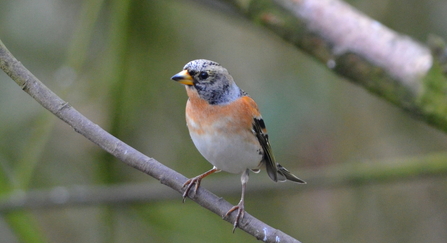
Brambling - Adam Jones
Mixed finch flocks
Winter finch flocks are a prime example of safety in numbers. When the mercury drops it isn’t unusual to see goldfinches, chaffinches, greenfinches and even bramblings roaming around in mixed groups. Travelling en-masse means more eyes to spot opportunistic predators, which in turn means the finches can spend more time eating and less time being on high alert; very important when your tiny body has to use huge amounts of energy just to keep from freezing.
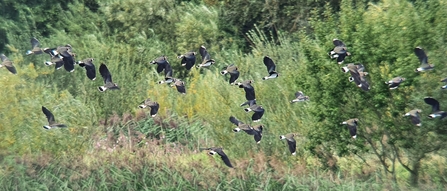
Thousands of wading birds
Every autumn and winter the UK’s coasts and wetlands are inundated with around half a million lapwings from across northern Europe; half a million dunlin from Scandinavia; 300,000 knot from northern Canada; 300,000 oystercatchers from Iceland and Norway; 60,000 bar-tailed godwits from north west Russia; 50,000 Icelandic redshanks; and 40,000 grey plovers from the Arctic. Phew!
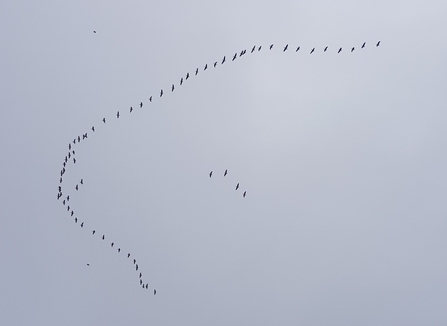
Pink-footed Geese heading for the coast
Wonderful wildfowl
Contrary to what the ’12 Days of Christmas’ would have you believe, geese aren’t laying in winter – they are, however, staging a mass exodus to our region. You know it’s winter when a huge skein of noisy geese flies overhead in their iconic v-formation. Pink-footed geese are by far the most numerous and are best seen feeding in the fields bordering Lunt Meadows.
Geese aren’t the only winter wildfowl to stick on your must-see list this season. Lancashire and Merseyside in particular see fantastic influxes of ducks from colder parts of Europe. Teal and tufted ducks are some of the most common, while gadwall, wigeon, goldeneyes and pintails see their numbers swell too.
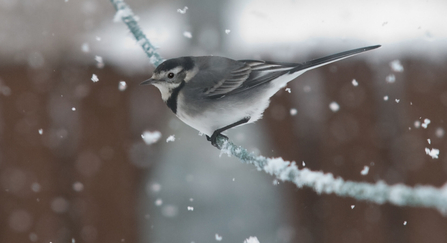
WildNet - Bob Coyle
Pied wagtail roosts
Starlings aren’t the only birds that form impressive flocks during winter. Pied wagtails – quite solitary for the rest of the year – come together on dark evenings to roost in tightly packed groups in nearby trees. Surprisingly, towns and cities are some of the best places to see winter pied wagtail roosts, as the birds take full advantage of being sheltered from predators and surrounded by warm buildings.

